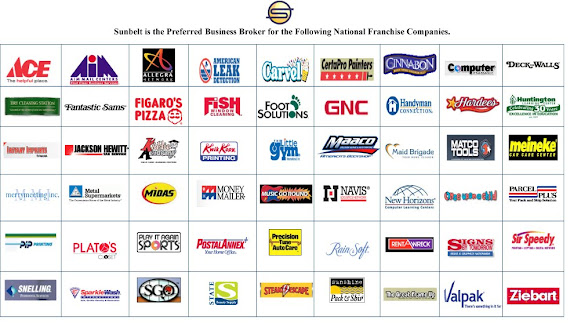New accounting rules may require that acquirers and acquiring companies report earnout agreements as liabilities.
Joel Johnson, president of Orchard Partners Inc., in his article, “Earnouts,” published by Valuation Strategies, states: "In a given year, 2% - 3% of announced mergers and acquisition agreements involve earnouts. These figures probably understate their prevalence. Earnouts tend to be a characteristic of smaller deals; and in many small deals, terms are not announced. Earnouts are rare when public companies are acquired and more common when ownership is concentrated among a few shareholders."
This would mean, if implemented, that earnout agreements must have a value placed on them for accounting purposes. As Joel Johnson points out, “The higher the earnout, the greater the liability.”
Why the Earnout?
Johnson further states that earnouts are used for various reasons:
1. to bridge the pricing gap between the seller who places a heavy emphasis on the company's projections, and the buyer who places most of the company's value on its present and past performance.
2. to tie the acquisition payout to future performance.
3. to create a form of seller financing in that some of the buyer's purchase price is delayed into the future. 4. to establish a form of escrow account in that the money is paid on condition of meeting certain thresholds.
5. to act as a type of employment agreement in that the CEO has to stick around in order to collect.
Helping You Buy or Sell a Business
HERBERT HOOVER
"Economic depression cannot be cured by legislative action or executive pronouncement. Economic wounds must be healed by the action of the cells of the economic body - the producers and consumers themselves."

Purchase a Business with Your 401k
Why? Because there are NO penalties, that’s right. This 401k Rollover program lets you use your 401k and other retirement funds to invest in a business – TAX AND PENALTY FREE. This is a safe, proven plan based on long standing provisions of the Internal Revenue Service (IRC § 6501). By using pre-tax retirement dollars to fund your business, you gain equity in your business and improve cash flow from day one. Use the funds to receive a salary during startup, while accelerating profitability by eliminating or reducing interest or debt. Application, creation, and funding is fast; typically (2-3 weeks or less). You can even set aside tax deductible retirement savings up to $200,000/yr. The benefits of using your 401k:-Minimize debt-Enhance cash flow-Stimulate business growth-Build equity-Take full advantage of tax benefits

- Indy Business Broker
- Noblesville, Indiana
- With over 16 years of business ownership, management and sales, Dave understands the needs of both buyers and sellers in confidential business transactions. As a former owner of a mortgage company, he also brings a unique perspective of the financing aspect of deal making. Since joining Sunbelt in 2004, Dave has represented a variety of companies in such industries as service, distribution and manufacturing. Dave has a reputation for successful transactions and consistently receives compliments from both buyers and sellers for his diligent work and adding tremendous value to the transaction process. In 2010, Dave successfully completed the necessary courses and requirements to be designated a Certified Mainstreet Business Broker (CMSBB). Dave’s education and experience includes: Indiana State University (Business Management), Indiana State (Securities Division) and Mortgage Brokers License (8 years). In his spare time, Dave and his family: Angela, Jayden (14) and Kade (12) enjoy family vacations and traveling, sporting activities and their local church. Contact Dave at 317.218.8626 or cell at 317.508.6690 dgorman@sunbeltindiana.com

Sunbelt Indiana Business Resource has been, and continues to be, the leading business brokerage in Indiana specializing in the marketing and sale of small and mid-size businesses. Consequently, our clients consider us more than business brokers. We serve as the business intermediary, strategist and advisor, giving us an objectivity that facilitates the entire transaction. As professional advisors, we maximize the market exposure of the business opportunity resulting in a mutually beneficial transaction for both seller and buyer. With more professional brokers on our staff than any other business brokerage in Indiana, the business is assured the maximum confidential exposure to the marketplace. In addition to our national presence through the Sunbelt Network, our extensive network of professional contacts among accountants, attorneys, bankers, venture and entrepreneurial sources also ensures that active buyers in the market are routinely, and in some cases exclusively, referred to us. Sunbelt Indiana Business Resource will provide business sellers a powerful set of solutions and services. In addition to traditional business brokerage, Sunbelt Indiana Business Resource will offer business valuation, equipment appraisal, new franchises, and hotel divestiture services. Buyers will be immediately exposed to in excess of 150 Indiana businesses available for acquisition, in excess of 10,000 businesses nationally, and over 50 franchisors looking to expand in Indiana.
We pledge to continue to provide the highest level of professional acquisition, divestiture, brokerage, and valuation services for Indiana's buyers and sellers.
We pledge to continue to provide the highest level of professional acquisition, divestiture, brokerage, and valuation services for Indiana's buyers and sellers.


Websites of Interest
Blog Stats
Available Franchises

